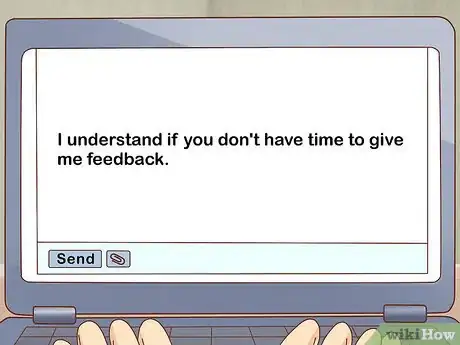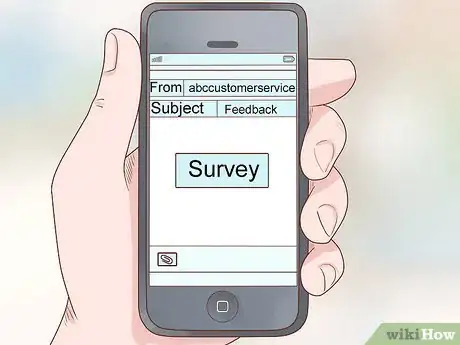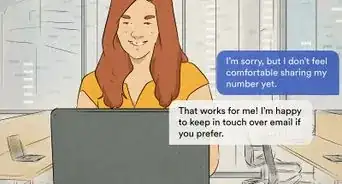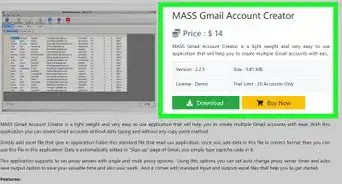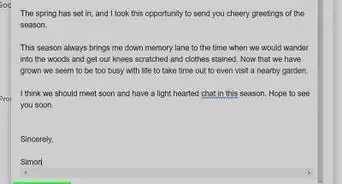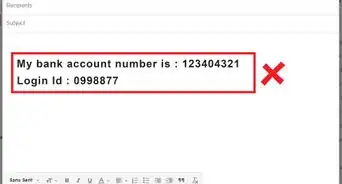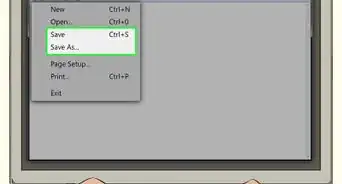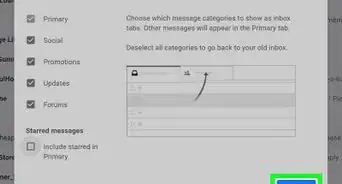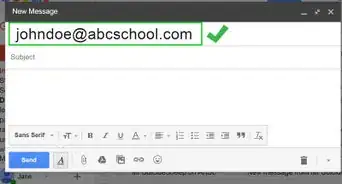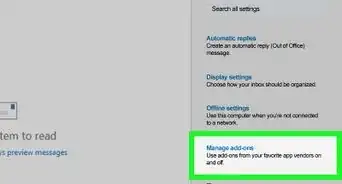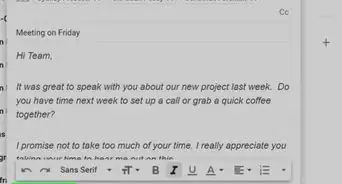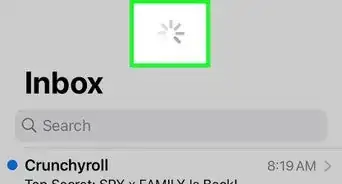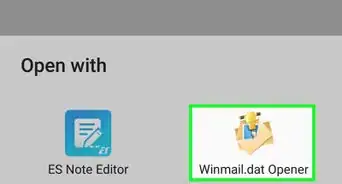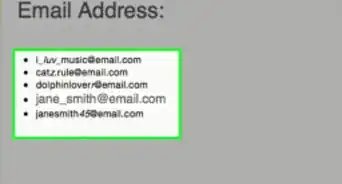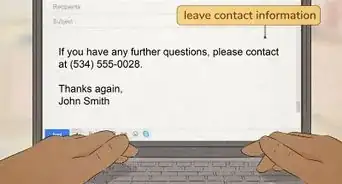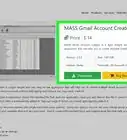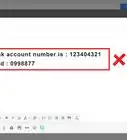This article was co-authored by Alyson Garrido, PCC. Alyson Garrido is an International Coach Federation accredited Professional Certified Coach (PCC), Facilitator, and Speaker. Using a strengths-based approach, she supports her clients with job search and career advancement. Alyson provides coaching for career direction, interview preparation, salary negotiation, and performance reviews as well as customized communication and leadership strategies. She is a Founding Partner of the Systemic Coach Academy of New Zealand.
There are 13 references cited in this article, which can be found at the bottom of the page.
This article has been viewed 940,270 times.
If you need to write an email asking for feedback at work, school, or for a written manuscript, knowing how to phrase, time, and structure your message can help you get the most timely and helpful response. This wikiHow article will show you how to write polite and effective requests for feedback and review via email. We'll also give you some sample feedback request emails to get you started!
Steps
Asking for Feedback at Work
-
1Address the person best qualified to comment on your work. Oftentimes this will be the manager immediately above you. In any case, you should start with them, or with a more senior colleague or co-worker. They will have the experience to help you and give you the feedback you need.[1]
-
2Be polite and humble in the email. You should follow the norms in your office for emails. Humility goes a long way in asking for feedback, but don’t be so humble that your boss or manager thinks you know nothing about your job. Rather, frame the questions in ways that show your progress on a project or task.[2] This will let the boss know you aren’t just sitting on your hands waiting for feedback. Also keep in mind the following tips.[3]
- You can say, “I was working on the presentation for tomorrow when I ran into a snag with the format—I’m not sure if I’m following the company’s standard. I’ve attached the presentation. Do you have any suggestions for the format? Thank you for your help with this.”
- Don’t forget to thank them in the email.
Advertisement -
3Be specific in your feedback request. This can help you avoid overly broad feedback that is unlikely to help you at your job. Avoid yes or no questions, unless necessary. Instead focus on specific parts of a project that need work. Try not to bombard your boss or co-worker with all the possible questions you could have about your job all at once.[4]
- You can say, for example, “I wasn’t sure how to proceed with the Eastman file. The client hasn’t responded to my emails, and since it is a high-priority assignment, I thought it best to email you to see what I should do.”
- If you are looking for more general feedback in the form of a review or report, request that specifically. Being polite, concise, and as specific as you can will help. For instance you could ask for a report on your efficiency or creativity. If you are asking for feedback from those who report to you, you may need to conduct an anonymous survey.
EXPERT TIPAlyson Garrido is an International Coach Federation accredited Professional Certified Coach (PCC), Facilitator, and Speaker. Using a strengths-based approach, she supports her clients with job search and career advancement. Alyson provides coaching for career direction, interview preparation, salary negotiation, and performance reviews as well as customized communication and leadership strategies. She is a Founding Partner of the Systemic Coach Academy of New Zealand.Workplace Coach
 Alyson Garrido, PCC
Alyson Garrido, PCC
Workplace CoachTry the KISS method when you're requesting general feedback. The KISS model is a great way to help people give you appropriate, actionable feedback. Ask the person, "What should I keep? What should I improve? What should I start? And what should I stop?"
-
4Send a thank-you email once they’ve responded. If the feedback suggested you need a lot of improvement or that your work is not up to par, make sure to include a brief statement of how you’ll fix it. Give yourself time to process the emotions before immediately responding.[5]
- Make sure you reply within 1-2 days at most.
Asking for Feedback at School
-
1Identify yourself. You teacher may have hundreds of students, especially if they’re a college professor. You’ll need to include your name (first and last), your class, and section. If you are still in high school, this might mean your period or time slot. This way you won’t waste the teacher’s time with making them figure out who you are, and they’ll spend more time on the feedback you need.[6]
-
2Keep it formal. Sometimes students struggle with this when first emailing teachers. You can say “Hi Dr. Smith” or “Dear Ms. Turner.” If your teacher has emailed you, do not be less formal than they have been. Keep the tone professional. Instead saying, “Hey, what do ya think of my paper? It isn’t the greatest,” say, “I’m not sure I understand the assignment. I had some specific questions regarding the paper.”[7]
-
3Keep it brief. Don’t worry about explaining all the context of your questions unless the context is necessary for those questions. For instance if you’re requesting feedback on a possible extension, your teacher may need context, but if you are simply trying to ask a question about an assignment, don’t tell them the story about how your dog made you run late and why you’re emailing now (unless it’s very close to the assignment time), or anything else that might be irrelevant to the assignment at hand.[8]
-
4Don’t wait to ask for feedback until the night before an exam or due date. Not only is your teacher not likely to give you feedback that close to a due date, they are likely to be irritated that you’ve waited to the last minute to ask them for feedback. If you must send last minute questions, be brief, specific, and apologetic. It will make the teacher more likely to respond, assuming they see the email in time.
-
5Use file formats your teacher has requested. Oftentimes, the teacher will tell you on the syllabus what file formats they will accept for assignments or in emails. For instance, if your teacher specifies a .doc file, don’t send a .pdf or a .pages file. If you are unsure, you can send an .rtf or .pdf file, or simply ask.
-
6Ask for feedback on a paper or exam you've already turned in. You simply need to email the professor and be polite. If the professor has office hours, you can visit those, or make an appointment. You can say, "Dear Professor Smith, I didn't do as well on my exam as I expected. Could you help me work through some of the mistakes I made so I can do better on the next exam?" Your professor should typically respond favorably to such a request.
Asking for Feedback on a Manuscript
-
1Email someone you know first. If you want attentive feedback, the best person to give it is someone you know, preferably a friend or a colleague. When emailing someone you know for feedback, make sure you email them how you usually would. If you'd usually call them, then you should probably do that instead. Don't send the manuscript in the first email, unless you know they are likely to say yes (someone for whom you've read a manuscript, or someone who's offered to read yours).[9]
- You can include a brief description or an abstract, depending on whether the person you're emailing is a friend or a colleague.
-
2Email an expert. If you really do need expert advice, send an email to an expert you know of and explain your project and why you need feedback. Don't be pushy, but rather kindly thank them for their consideration, and say, "I understand if you don't have time to give me feedback." You may even want to ask if they know anyone with the time and expertise who can help you if they can't.[10]
-
3Don’t cold-email someone a manuscript. This will likely go unanswered, unless you specifically tell them you will pay for their help. If they are a famous author, they are unlikely to respond to such an email as they receive a ton of such emails. Instead, ask your friends, colleagues, professors, etc., first. They are more likely to be able to help you, and more likely to want to help you.[11]
-
4Be specific about what you want from their feedback. If you only want positive feedback, tell them so. Tell them whether you detailed feedback, local or global feedback, and whether you want aesthetic, grammatical, or structural feedback. This can go a long way in helping your reader know what you want from them.[12]
- Positive feedback need not be un-constructive. If they explain why they like what they like, you can learn a lot about your manuscript.[13]
- If you get negative feedback, give yourself time to respond. If they are your friend, they likely only want to help. If they are a professor, no matter how angry or upset you feel, you should not respond in that manner. Instead, thank them for their help, and move on. After some time you may find that the feedback was helpful, even if the manner in which it was delivered was not.
-
5Give your reader time to respond. If you have asked for detailed feedback on a novel manuscript, don’t expect feedback within a day or even a week. It takes time to edit a manuscript of that length. If you have a deadline you’re working toward, let your reader know this. You can also simply ask them if they can have the edits done by a certain date. Remember they have their own life and obligations.[14]
-
6Thank them for their help. If it is a friend, you might want to buy them a gift like a box of chocolates, or simply return the favor in time. If it is a professor, you may want to write a thank you email to let them know you appreciate their work and time. Forgetting to thank your reader can leave them feeling used and/or unappreciated, and may make them less likely to help you in the future.[15]
Asking for Feedback from Customers
-
1Don't ask too many questions. Customers are overwhelmed with surveys from pretty much every business out there. If you want to ensure a customer automatically deletes your email upon reading it, fill it with a ton of questions. If you want to keep the customer interested, ask one or two questions and leave it at that.[16]
-
2Ask open-ended questions. Rather using yes/no questions, ask question that elicit fuller answers. Instead of asking, "Would you recommend us to a friend?", ask "How would you describe us to a friend?" These kind of questions give you more information in the answers than a simple yes/no question.[17]
-
3Let the customer know you'll get back to them quickly. This makes the customer feel as though their opinion isn't just going to some giant inbox, where it may or may not be read or considered. You'll also likely get more candid feedback, if they know you'll respond.[18]
- When you do respond, be candid and professional. In today's viral internet culture, you can ruin a company's reputation in a second if you respond with anything other than professionalism and sincerity.
-
4Don't include flash or other slow to load features. If a customer has a slow connection, they will likely delete the email immediately when they see it's failing to load. Remember that feedback is often more important to you than them.
-
5Use well-designed font and format. You want your email to look clean and professional. An email with shoddy graphics or comic sans font is unlikely to impress your customers. Instead, use standard fonts like Times New Roman or Arial if you are unsure of a font, and keep excess graphics to a minimum.[19]
-
6Make sure the email is device-friendly. A single-column format is more flexible than multi-column designs. You'll also want to make sure your fonts aren't too small. You'll want the email to appear to advantage on laptops, phones, and tablets. With so many people checking their email on their phones, it's imperative that you format your emails accordingly.[20]
Email-Writing Help
References
- ↑ https://fortune.com/2015/05/22/asking-performance-feedback-work/
- ↑ https://fortune.com/2015/05/22/asking-performance-feedback-work/
- ↑ http://michaelhyatt.com/e-mail-etiquette-101.html
- ↑ https://fortune.com/2015/05/22/asking-performance-feedback-work/
- ↑ https://fortune.com/2015/05/22/asking-performance-feedback-work/
- ↑ https://owl.english.purdue.edu/owl/resource/694/1/
- ↑ https://owl.english.purdue.edu/owl/resource/694/1/
- ↑ https://owl.english.purdue.edu/owl/resource/694/1/
- ↑ https://www.elsevier.com/authors-update/story/publishing-tips/5-ways-you-can-ensure-your-manuscript-avoids-the-desk-reject-pile
- ↑ http://journalistsresource.org/tip-sheets/reporting/interviewing-a-source
- ↑ https://writingcooperative.com/how-to-get-manuscript-readers-to-tell-you-the-truth-8d0d562e0d75
- ↑ http://www.wiseinkblog.com/planning/at-first-draft-the-6-minimal-steps-to-revising-your-manuscript-before-submission/
- ↑ http://jimmiescollage.com/2010/12/positive-feedback-writing/
- ↑ http://connection.sagepub.com/blog/sage-connection/2013/11/05/9-publishing-basics-for-anyone-submitting-to-a-scholarly-journal/
- ↑ https://writingcooperative.com/how-to-get-manuscript-readers-to-tell-you-the-truth-8d0d562e0d75
- ↑ https://www.kayako.com/blog/the-proper-way-to-ask-for-customer-feedback/
- ↑ https://www.kayako.com/blog/the-proper-way-to-ask-for-customer-feedback/
- ↑ https://www.helpscout.net/blog/customer-feedback/
- ↑ https://www.canva.com/learn/best-email-designs/
- ↑ http://blogs.constantcontact.com/mobile-friendly-emails/











